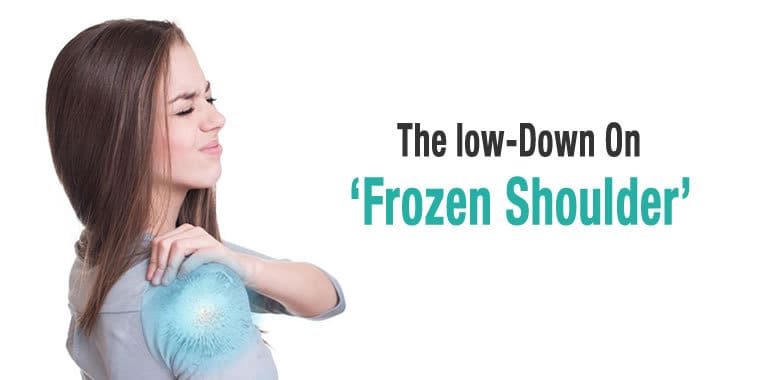
This morning was the first time I couldn’t reach my hair to wash. I’ve been struggling for a couple of weeks, but today I had to use my left arm. I’ve been having trouble putting on my shirts. I’ve been waking up more and more each night from the pain. You might have Frozen Shoulder.
Since your shoulder is the most mobile and active joint in your body, experiencing frozen shoulder can cause great limitation in your daily life.
Frozen shoulder is a disorder in which the shoulder joint capsule becomes inflamed and stiff, thus causing adhesion. It occurs more frequently in individuals between the age of 40 and 60, especially those who are female, suffer from diabetes or thyroid related issues are at a higher risk of acquiring frozen shoulder than others.
A hallmark giveaway for frozen shoulder is loss of rotation motion which you can test it by putting the elbow at your side and rotating your arm away from your body, take a look at what the medical profession call it’s ‘stages, below.
During the first stage of frozen shoulder, the patient undergoes what is termed the ‘painful phase’. He/she starts to feel pain even while at rest and his/her motion is minimally restricted. These symptoms could last for 2-9 months.
The second stage is the ‘frozen phase’, characterized by further motion restriction and severe pain even if the patient is in a state of inactivity. You’ll know you are in this phase once normal everyday routines are disrupted and the pain is greatly increased.
Finally, the patient experiences a ‘thawing phase’. As the name suggests, the symptoms of ‘frozen shoulder’ seem to ease off, thus causing a much needed reduction in pain. If you’re in this phase, you’re over the hump – but be careful, things might not return to normal immediately.
It is estimated that spontaneous recovery is possible after two years. But, studies have shown that 50% of patients still have motion limitation more than 3 years after the onset of pain, and, what’s worse, 27 % to 50% of patients report persistent mild pain for up to seven years.
So, how can you avoid those odds, and, if you don’t want to wait years for the pain to subside, what frozen shoulder treatments are available to you today?
The first of these is physical therapy. Without a doubt, help from a professional PT is by far the most successful way of conquering frozen shoulder. In my clinic alone, I have witnessed countless patients get treated for frozen shoulder with a phenomenal success rate. Because PT is accompanied by a personal set of stretches, ongoing advice, and treatment, it stands as the single most effective way of reducing pain, gaining mobility, and recovering from frozen shoulder.
One of option is surgical treatment. But be warned: if you decide to go this route please be aware that there are pros and cons. Research showed you can recover your arm motion significantly but this procedure is hard on your body. Forceful stretching during the surgery may cause structural damages to your arm.
In light of this, physical therapy is by far the safest and most effective way to treat frozen shoulder. To find out how YOU can receive expert help, call us today to arrange a FREE consultation visit.
- Stop treating people like dead - March 25, 2024
- Stop Asking Me ‘Where are you from?” - March 25, 2024
- You Need the Right Diagnosis, not the Right Technique - November 25, 2020





